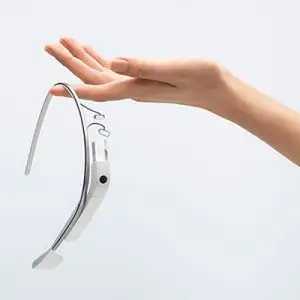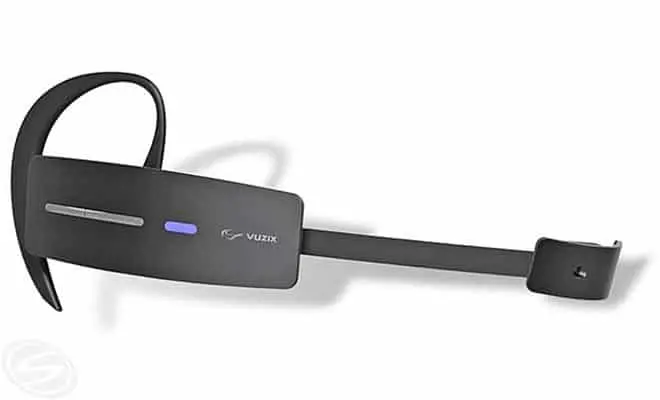If one were asked about the future of wearable computers, smart glasses in particular, they would most likely respond with knowledge of one product: Google Glass. While Google’s latest technology venture is soaking up the spotlight in the electronics world, Vuzix is already manufacturing and selling their own smart glasses and are currently developing the Vuzix M100 augmented reality smart glasses.
Vuzix, a company specializing in video eyewear products, has come a long way since its formation 16 years ago in Rochester, New York. Vuzix started off under another name, developing components for night vision optics. The company would later use their experience to expand into other markets, such as PDAs and custom displays. It was not until 2005 that Vuzix began mass-producing video eyewear products. They have not made a large impact on consumer electronics in the past, due to the obscurity of their trade, and the cost of manufacturing such advanced technology. They are looking to change that with their latest offering, the Smart Glasses M100.
While Google Glass may have the edge on style, the Vuzix Smart Glasses M100 dominates in hardware and affordability.
The Model M100, shown at CES 2013, is a promising attempt to take control of the wearable computer market early. As opposed to Google Glass, the M100 is not meant to be a standalone device. The device is designed and marketed as a peripheral for your cell phone. The Smart Glasses take “hands-free” to a whole new level, adding a display that you can view just as if you were wearing glasses. The M100 also sports a camera for snapping quick pictures without using your hands, as well as an ear speaker and noise-canceling microphone, for making phone calls.
Google Glass is marketed as an augmented reality device, meaning it takes what is being observed, and overlays information on top of what the user sees, thus “augmenting” reality. In released product videos, we have seen people using Glass to snap pictures, look up information, navigate with GPS, and communicate with friends and family. No hardware specifications have been released yet, but it has been stated that Google Glass will use a modified version of Android.

The Vuzix M100 smart glasses, however, have a wealth of technical information surrounding them. The Smart Glasses feature their own processor running an optimized version of Android, which then communicates with smart phones, allowing the user to control their device with it. The processor is clocked at 1GHz, and the M100 contains 1GB of RAM, which is seemingly the new standard for mobile devices. Vuzix’s M100 allows users to wear the peripheral on either the left or right eye, while Google Glass looks a little more challenging if the user is inclined to switch sides.
The Vuzix Smart Glasses M100 holds 4GB of flash storage right out of the box, but is expandable to 8GB with a MicroSD card. Also, on the M100, are buttons for selection, power, and volume. With an estimated 8 hour battery, the Smart Glasses will most likely need to be recharged at the same rate as the cell phone they are controlling over Bluetooth or WiFi.
The most impressive hardware aspect of these Smart Glasses is the display. The display is where this product shines, literally. The WQVGA display is mounted on an arm in front of the user’s eye, where all the information is viewed. The field of view of the display will be equivalent to a 4 inch screen at a 14-inch distance from the user’s eye. With 24-bit “true color,” this display will look incredible. The viewing area is reported to feature brightness of greater than 2000 nits. Just to understand how impressive that is, a regular computer screen is in the area of 200-500 nits, and a high-end television is somewhere under 1000 nits. This means that the Smart Glasses M100 will offer an incredibly bright and vibrant screen, even in the brightest of locations. The M100, armed with a 720p HD camera, should also be able to take satisfying photos hands-free.
While the hardware in the M100 is more than sufficient, the big question that remains unanswered is: Can it stand up to Google Glass? This question will have to answer itself when both devices officially release. While Glass is priced at $1500 for beta-testing developers, Google has stated that their device should be somewhere under $1000 when released to consumers. Vuzix is expected to release their eyewear at around $500. This may urge consumers that are interested in virtual eyewear to purchase the cheaper alternative, especially since smart glasses technology is still in its infancy.
As the Vuzix Smart Glasses M100 and Google Glass are early contenders in the smart glasses market, there will be many more companies attempting to cash in on the latest tech fad. To be dominant in this market, manufacturers will have to create a product that is stylish, powerful, and affordable. While Google Glass may have the edge on style, the Vuzix Smart Glasses M100 dominates in hardware and affordability. The M100 will likely release sometime soon, while Google Glass estimates release closer to 2014. Which offering, if any, will you be purchasing? Let us know below.
Source
Vuzix: [Company Website]

